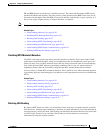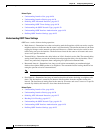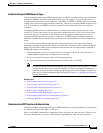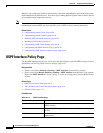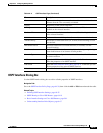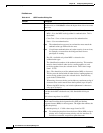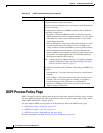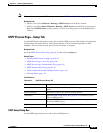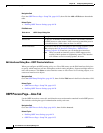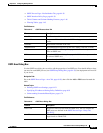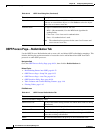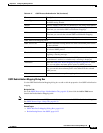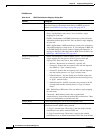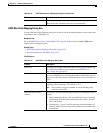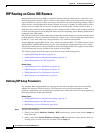
64-35
User Guide for Cisco Security Manager 4.4
OL-28826-01
Chapter 64 Configuring Routing Policies
OSPF Process Policy Page
Note For more information about OSPF interface policies, see OSPF Interface Policy Page, page 64-30.
Navigation Path
• (Device view) Select Platform > Routing > OSPF Process from the Policy selector.
• (Policy view) Select Router Platform > Routing > OSPF Process from the Policy Type selector.
Right-click OSPF Process to create a policy, or select an existing policy from the Shared Policy
selector.
OSPF Process Page—Setup Tab
Use the OSPF Process Setup tab to create, edit, and delete OSPF processes. This includes selecting those
interfaces that will remain passive, which means that they will not send routing updates to their
neighbors. You can create as many processes for each router as required.
Navigation Path
Go to the OSPF Process Policy Page, page 64-34, then click the Setup tab.
Related Topics
• Defining OSPF Process Settings, page 64-20
• OSPF Process Page—Area Tab, page 64-36
• OSPF Process Page—Redistribution Tab, page 64-38
• OSPF Interface Policy Page, page 64-30
• Table Columns and Column Heading Features, page 1-46
• Filtering Tables, page 1-45
Field Reference
OSPF Setup Dialog Box
Use the OSPF Setup dialog box to add or edit an OSPF process.
Table 64-13 OSPF Process Setup Tab
Element Description
Process ID The process ID that identifies the OSPF routing process to other
routers.
Passive Interfaces The interfaces that do not send out routing updates.
Add button Opens the OSPF Setup Dialog Box, page 64-35. From here you can
define an OSPF process.
Edit button Opens the OSPF Setup Dialog Box, page 64-35. From here you can edit
the selected OSPF process.
Delete button Deletes the selected OSPF processes from the table.



